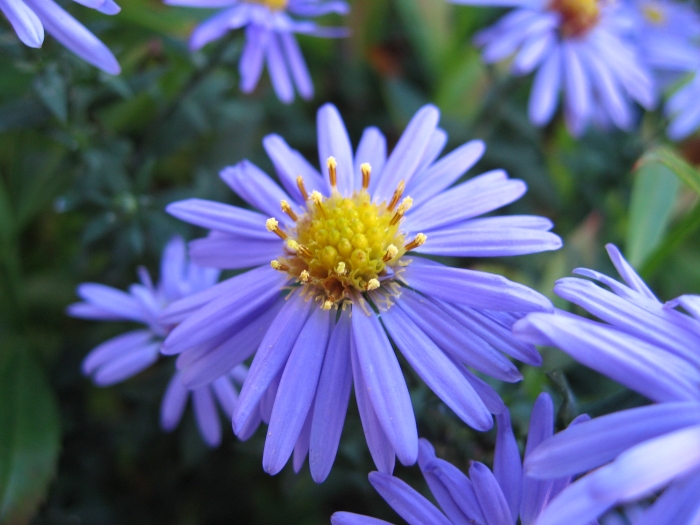Smooth Blue Aster
(Symphyotrichum laeve)
Smooth Blue Aster (Symphyotrichum laeve)
/
/

Heike Löchel
CC BY-SA 2.0 de




















































Estimated Native Range
Summary
Smooth Blue Aster is valued for its drought tolerance, low maintenance, and ability to attract wildlife, making it suitable for naturalistic plantings, wildflower gardens, and borders. It thrives in full sun but can tolerate part shade, and prefers well-drained soils. While generally pest-free, it can be susceptible to powdery mildew in humid conditions. This aster is not known for aggressive roots or significant disease issues, making it a reliable choice for gardeners.CC BY-SA 4.0
Plant Description
- Plant Type: Herb
- Height: 2-4 feet
- Width: 1-2 feet
- Growth Rate: Moderate
- Flower Color: Blue, Purple
- Flowering Season: Fall
- Leaf Retention: Deciduous
Growth Requirements
- Sun: Full Sun, Part Shade
- Water: Medium
- Drainage: Fast, Medium
Common Uses
Bee Garden, Bird Garden, Border Plant, Butterfly Garden, Drought Tolerant, Erosion Control, Fire Resistant, Groundcover, Low Maintenance, Salt Tolerant, Showy Flowers, Street Planting
Natural Habitat
native to prairies, meadows, and open woodlands across the Intermountain West, Central and Eastern USA, and Canada
Other Names
Common Names: Smooth-Leaved Aster , Glaucous Aster , Smooth Aster , Kahle Aster , Glatte Aster
Scientific Names: Symphyotrichum laeve , Aster laevis , Symphyotrichum laeve subsp. laeve , Aster laevis var. laevis , Aster laevis subsp. laevis , Aster rubricaulis , Aster laevis var. sourisensis , Aster pickettianus , Aster decorus , Aster expansus
GBIF Accepted Name: Symphyotrichum laeve (L.) Á.Löve & D.Löve